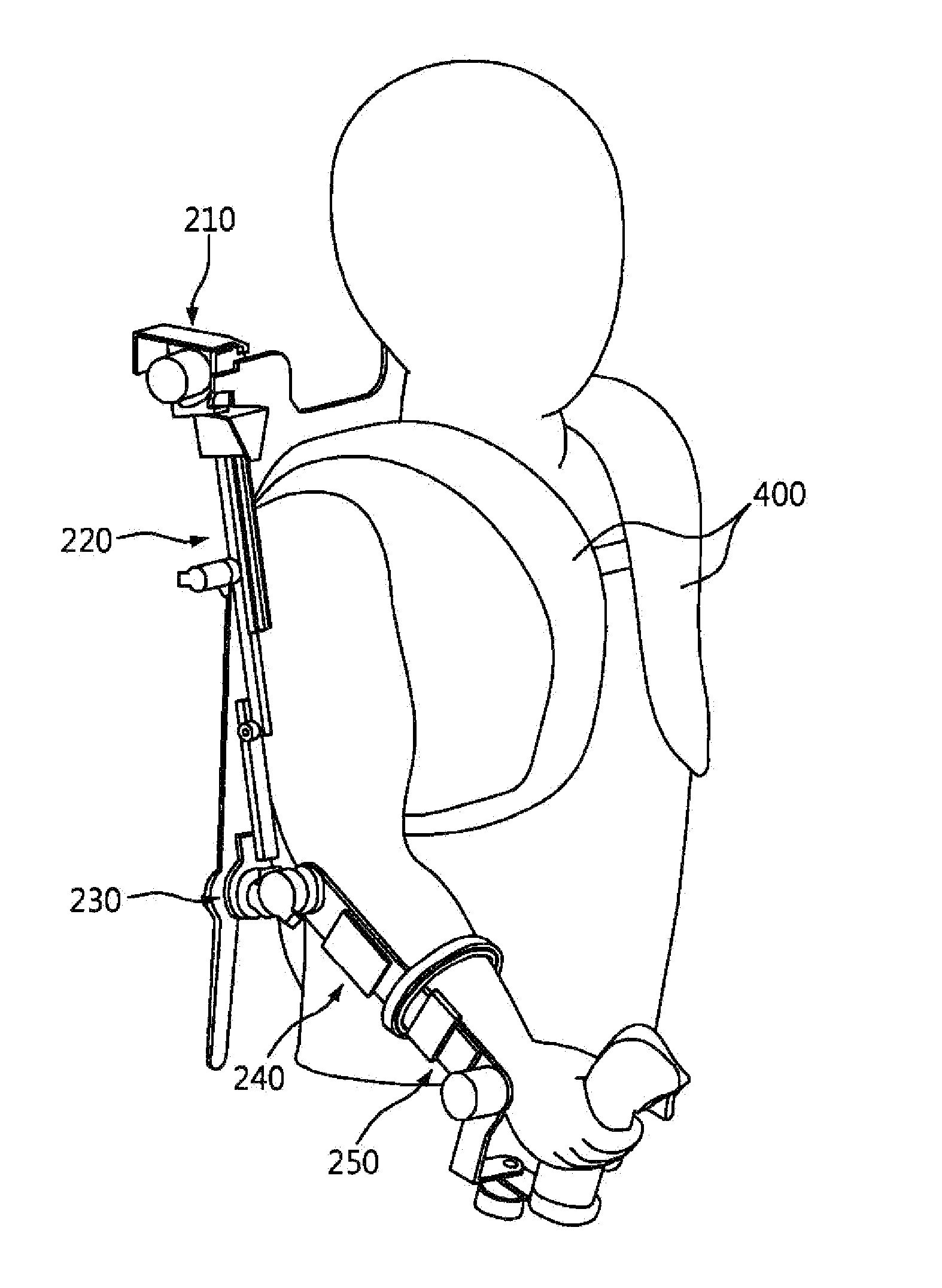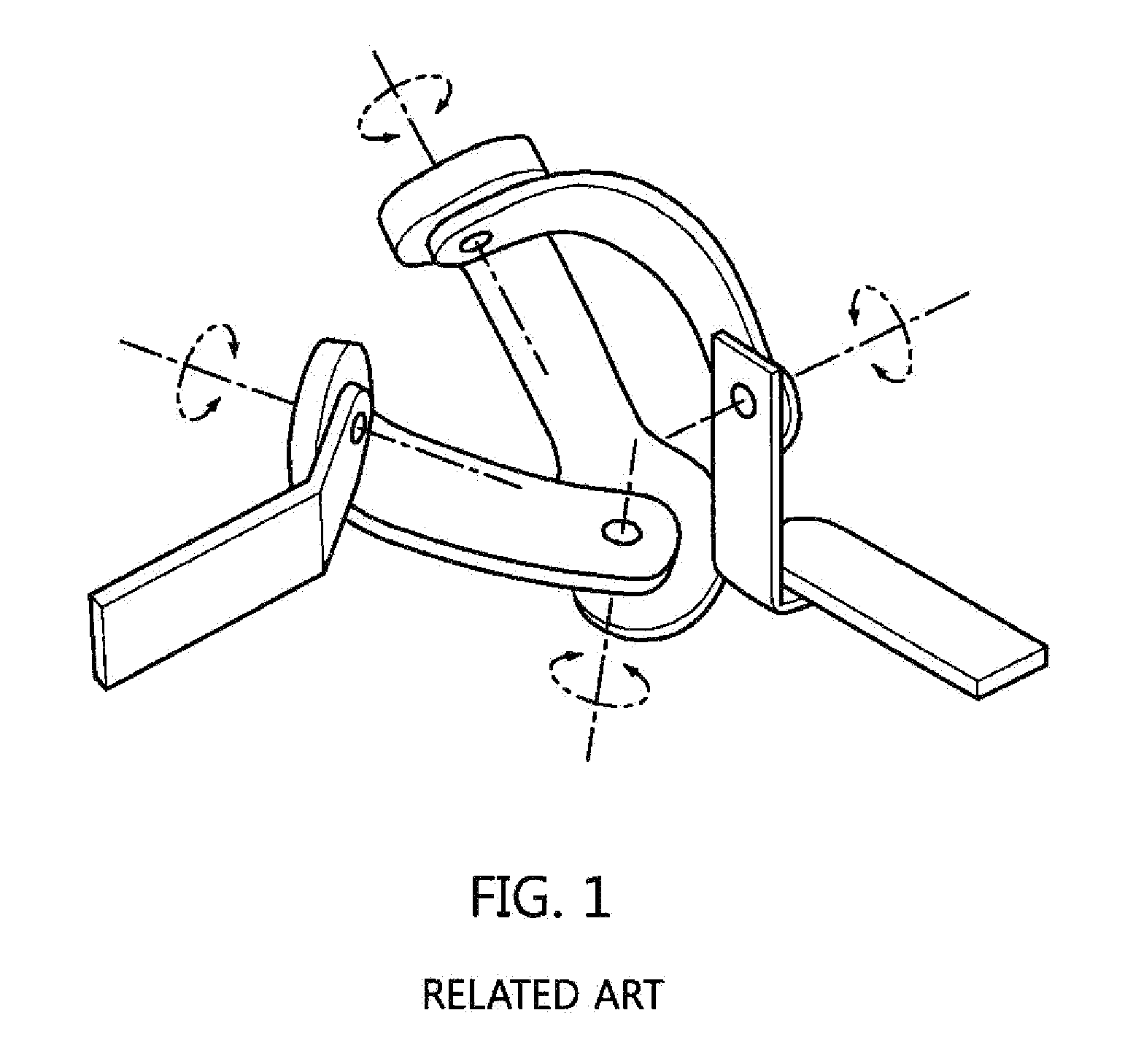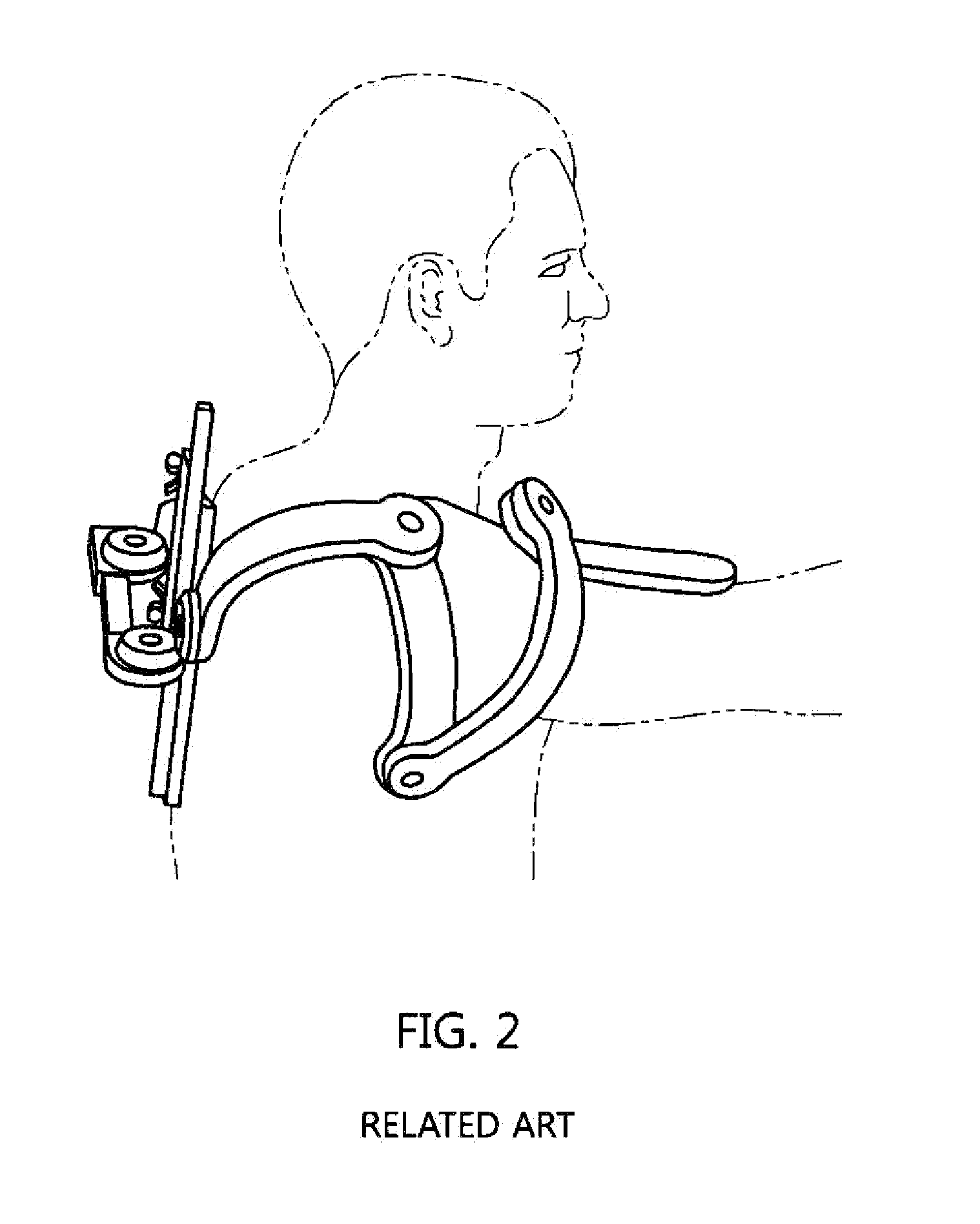Wearable apparatus for measuring position and action of arm
a technology of arm and arm movement, which is applied in the direction of applications, programs, instruments, etc., can solve the problems of long time for robots to learn complicated motions, robots may take undesired postures, and poor intuition in implementing robots, so as to reduce the learning time of robots, facilitate the movement of both arms, and make the robot quickly and accurately learn the motions
- Summary
- Abstract
- Description
- Claims
- Application Information
AI Technical Summary
Benefits of technology
Problems solved by technology
Method used
Image
Examples
Embodiment Construction
[0042]The present invention will be described in detail below with reference to the accompanying drawings. Repeated descriptions and descriptions of known functions and configurations which have been deemed to make the gist of the present invention unnecessarily obscure will be omitted below. The embodiments of the present invention are intended to fully describe the present invention to a person having ordinary knowledge in the art to which the present invention pertains. Accordingly, the shapes, sizes, etc. of components in the drawings may be exaggerated to make the description clearer.
[0043]FIG. 3 is a perspective view showing an embodiment of a wearable apparatus for measuring position and action of an arm according to an embodiment of the present invention and FIG. 4 is a schematic view showing an embodiment of a wearable apparatus for measuring position and action of an arm according to an embodiment of the present invention.
[0044]A wearable apparatus for measuring position a...
PUM
 Login to View More
Login to View More Abstract
Description
Claims
Application Information
 Login to View More
Login to View More - R&D
- Intellectual Property
- Life Sciences
- Materials
- Tech Scout
- Unparalleled Data Quality
- Higher Quality Content
- 60% Fewer Hallucinations
Browse by: Latest US Patents, China's latest patents, Technical Efficacy Thesaurus, Application Domain, Technology Topic, Popular Technical Reports.
© 2025 PatSnap. All rights reserved.Legal|Privacy policy|Modern Slavery Act Transparency Statement|Sitemap|About US| Contact US: help@patsnap.com



